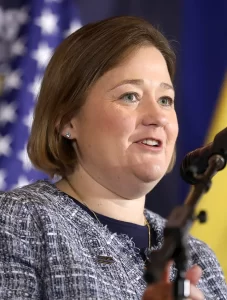According to a report by the American Enterprise Institute (AEI), the United States foster care system serves nearly 400,000 children, most of whom have experienced abuse or neglect by their caregivers (an unfit parent, for example). Studies indicate that of those children, it is estimated that up to 40% of them have experienced some type of abuse within the foster care system. Sexual predators often target vulnerable children, and when grouped together in a system underequipped to provide adequate protection, foster care children can become easily accessible targets for sexual abuse.
However, the AEI says a crisis threatens to destabilize the system and put these children at even greater risk. A growing shortage of liability insurance is making it increasingly difficult for foster care agencies to operate, creating uncertainty for the very children the system is designed to protect.
Many states rely on private foster care agencies to screen and place children with families, provide oversight, and offer support to foster parents. These agencies are legally required to carry liability insurance, yet securing coverage has become an uphill battle. Across multiple states, agencies report difficulty obtaining insurance, even those with strong safety records. In some cases, insurers have entirely withdrawn from the market, leaving foster care providers scrambling for coverage.
Why Is Foster Care Insurance Becoming Unavailable?
One major factor driving this crisis is the rising cost of liability insurance, which has outpaced general inflation. Known as social inflation, this phenomenon increases the financial risk of insuring foster care agencies, making coverage unaffordable for providers or too risky for insurers. Without liability insurance, foster care agencies cannot legally operate, meaning fewer resources for children who desperately need stable homes.
When insurance costs rise beyond sustainability, states face difficult choices:
- Placing children in congregate care or restrictive settings rather than family environments.
- Reducing the number of available foster placements, worsening an already strained system.
- Shifting resources away from child welfare services to cover financial risks.
The long-term effect? Fewer children in stable, loving homes and more placed in institutional settings—contrary to decades of child welfare policy aiming to provide family-like environments.
Protecting Foster Children and Strengthening the System
Ensuring that foster children remain protected while maintaining the system’s stability requires urgent action. Solutions must balance accountability for wrongdoing with the need to sustain foster care agencies. Here are five policy recommendations the signatories to the AEI report recommend for safeguarding both children and providers:
- Create a Victims’ Fund – A federal fund could provide direct compensation for foster children who experience abuse, ensuring support without destabilizing foster care services.
- Establish a Risk Pool – A federally supported risk pool could help spread liability costs across multiple agencies, preventing insurance costs from becoming an insurmountable barrier.
- Condition Federal Funding – States could receive federal funding incentives for enacting policies that ensure foster agencies maintain high safety standards while also receiving protection from excessive financial liability.
- Implement Safe Provider Discounts – Similar to auto insurance programs that reward safe driving, foster care agencies that meet strict safety benchmarks could receive lower insurance costs or liability protections.
- Subsidize Insurance Costs – Given that private foster care agencies fulfill essential state functions, financial support for liability insurance could help ensure their continued operation.
A Call to Action for Child Welfare Advocates
Foster children are among society’s most vulnerable, and they deserve protection without jeopardizing the very system meant to care for them. Ensuring a stable foster care infrastructure requires thoughtful policy reforms that allow agencies to continue their critical work while holding bad actors accountable.
By addressing these challenges now, policymakers and advocates can help create a foster care system that is both safe and sustainable—one that truly prioritizes the well-being of every child in need.




